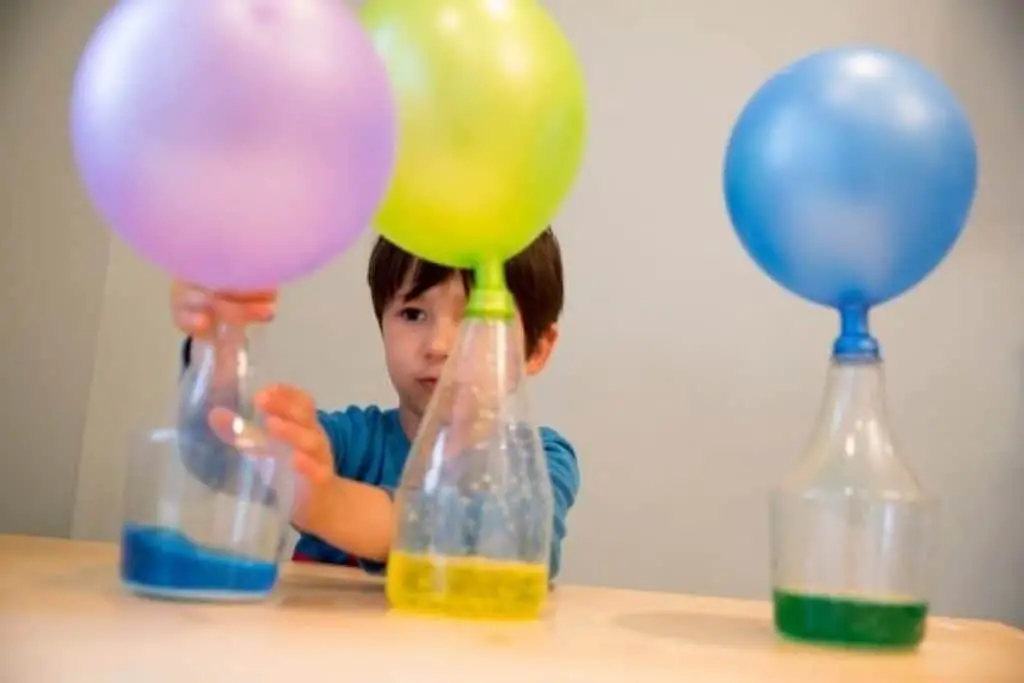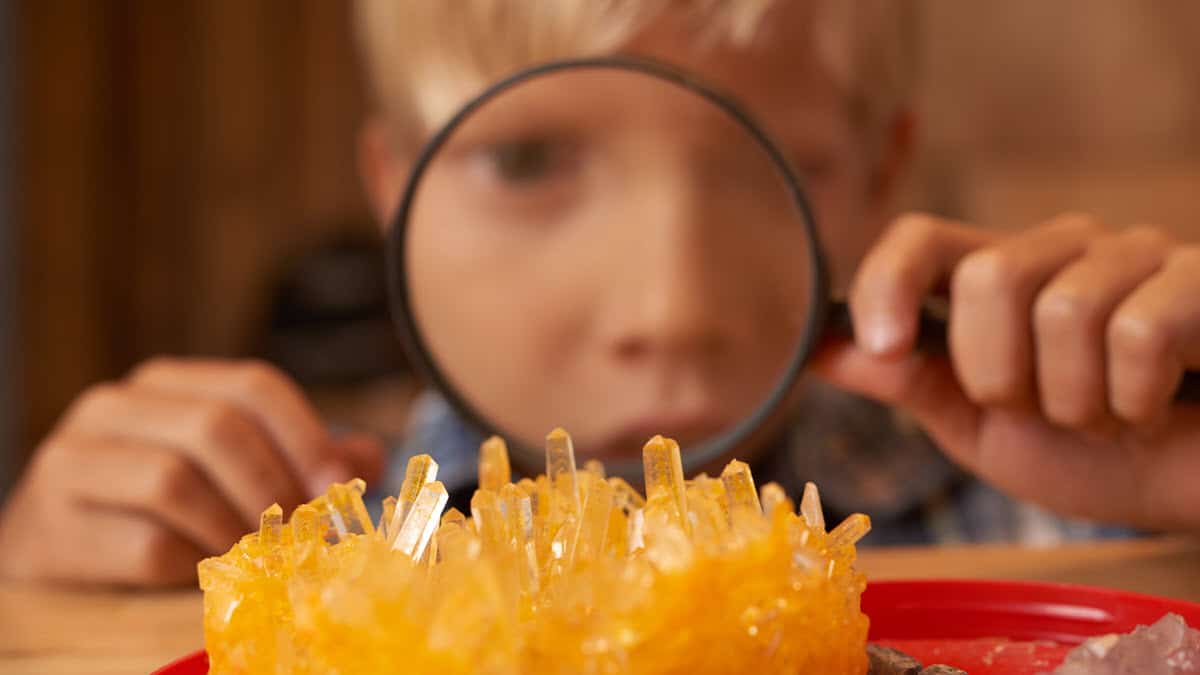4 Long Term STEM Projects (for Fun + Learning!)
Are you looking for a STEM project that lasts more than an hour?
Whether you’re looking for an activity that will keep your child engaged for a whole day or something that you can keep popping back to, we’ve got some great ideas for you to try out.
Related posts: Spooktacular Halloween STEM Projects (Scary Fun!)
Projects To Leave And Come Back To
These are long term STEM projects that you can set up and leave while they do their thing. Once you have them set up, your child can pop back to see the progress whenever they want. These sorts of activities are great for promoting more in-depth learning. They encourage your kid to ask questions and to think about what’s going to happen.
Growing Crystals
There are hundreds of different recipes for growing crystals. There are salt crystals or borax crystals. You can even grow crystals to make a Christmas tree! My favorite type of crystal to grow, though, is a sugar crystal.

This takes a little bit of prep work. You need to get a piece of string wet the night before and cover it in sugar. It needs to be dry by the time you do your activity.
On the day of your activity, you need to make a supersaturated solution of sugar. You heat some water until it’s warm, and dissolve as much sugar into it as you can. But, don’t heat it past 210 degrees, or you’ll begin to make a caramel.
When you can no longer dissolve any more sugar, transfer the solution to a big clear jar. A mason jar is ideal. Then hang your pre-prepared string, so it dangles to the bottom of the solution. You can tie it to a straw or a popsicle stick to do this.
Now comes the waiting. You can leave your sugar crystal to grow for as much time as you want. Your child can keep checking in to see how big the crystals have become. When you decide to take them out, you can inspect them with a magnifying glass to see the amazing crystals you made.
To make the sugar crystals more exciting, you can add food coloring or edible glitter to your sugar solution.
Capillary Action in Plants
If your child is learning about plants in middle school science, then this is a cool project to try out. It’s also effortless to do. You need to find some fresh cut flowers. White ones are best.

Make a diagonal cut in your flower’s stem and stand it in water with food coloring mixed in. Over a day or a week (it depends on the type of flower), the petals will begin to change color.
When you’re done watching the petals change color, you can carefully cut the stem of the plant open and see what has happened inside. It’s a great illustration to help with learning about xylem and capillary action in plants.
A Project That Will Occupy You Kids For A Long Time
If you need an activity that will keep your child occupied for an extended time, we suggest Stop Motion Animation. All your child needs is a phone and some imagination. There are loads of free apps that you can use to make stop motion animations and videos.

You can give your child pretty much anything to use for these. Some examples of materials are clay, lego, or paper clips! This is a great project because it involves technology, engineering, and art. Plus, your child will have something to show for their effort when they’re done.
How To Help You Child Design Their Own Stem Project
If you’re homeschooling your child, you might be looking to get more out of STEM activities. Here are some projects that your child can work on for however much time you’re willing to let them do so.
If your child is ready to take the lead, you might want to try something called inquiry-based learning. Inquiry-based learning is a technique where you give your child a question to explore. They then decide how to go about finding the answer.
The best questions are ones they’ve asked themselves. For example, if you tried the capillary action project, you and your child might have asked which flowers take the longest to change color. That is a perfect starting point for some project-based learning.
You start from the question and then ask your child how they could find out the answer. You’re guiding them towards designing an experiment. It’s a good idea to get them to develop a plan before you let them loose on their real-world science experiment. You can help them build their critical thinking skills by asking questions about their project.

To get the most learning out of these activities, you should encourage your child to summarize their learning and talk about what they could do better if they were to repeat their experiment. This type of project and critical thinking is the foundation of the scientific method.
You can encourage your child to follow this approach to learn about any question they have. It works for science, technology, engineering, and maths problems.
Frequently Asked Questions
What is STEM project-based learning?
Stem project-based or inquiry-based learning is a technique that puts the school students or children at the heart of the problem. They are guided to find the answers for themselves.
These methods follow a cycle — Ask, Investigate, Create, Discuss, Reflect. You can go round the loop as many times as needed.
What’s the benefit of longer stem projects?
It encourages your child to think more about what they are doing when you extend a stem activity. They return to the subject repeatedly, which gives them more opportunities to ask questions about the activities they are doing. More questions mean more learning.
Can you apply project-based learning to steam activities?
You can use project-based learning for any question you can come up with. It works for STEM, STEAM, and any other real-world questions.







